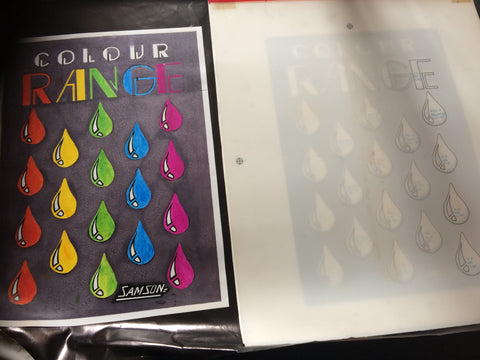Unfiltered Access - Meet the team: Kim Crosland
Kim Crosland – Graphic Designer
Kim Crosland started her career in design in her late teens after completing some fulltime courses and night classes at Auckland Technical Institute (now AUT). With an artistic flair and stand-out skills in maths and technical drawing, Kim originally wanted to be an architect, but chose design because back then it mainly involved drawing!
“We had only one computer in another room for doing basic font printouts. Everything else was drawn up by hand,” Kim says of her ATI course.
Kim’s first job was as a junior at Aldous Graphic in Parnell, designing anything from business cards to print advertisements and learning on-the-job. This was all done by hand - the process was time-consuming and laborious. Kim sat at a large drawing board desk with a sliding ruler. A range of special black ink drawing pens in different point sizes was used for straight lines or for text. “Letraset” fonts were rubbed onto a card to make words, after marking up where they needed to show on the page.
The only computers used for graphic design were those used by print companies. For larger documents with a lot of written information, Kim and her colleagues would mark up where they wanted the text to go in boxes and supply them to the printer via text-only email. The printer would then set it and send the sheet back on bromide paper. This was then run through a wax machine and fitted on the artwork card in the position previously marked up.
“If there were spelling errors or words taken out, we had to manually cut them out with a scalpel and move the letters one by one, sliding the text around. That’s why wax was used.”
A little later on we had a bromide camera that could be used to enlarge and reproduce fonts, for developing onto bromide paper in a dark room. When the text was all cut out into position, we took a photo of it with the bromide camera so it was all one piece again and no shadowing between the text cuts. Any shadow lines between letters were scraped using the scalpel.
If images were required, they were drawn or supplied to the printer on film along with a blueline outline. Designers would enlarge or reduce the size of the image using a lightbox. The image was traced onto a see-through sheet of paper and spray-mounted onto the art card. Once everything was done it was all sent to the printers which used plates for printing CMYK plates.
Member of the Access team
“The company I used to work for paid tens of thousands of dollars for their first computers. Business, fonts cost thousands too! We had to learn how to go from doing everything by hand to learning the programs as soon as the computers rolled in the door at work. October 1994 is when we converted. Lol”
Kim started working for Easy Access in 2013, creatively designing print and digital marketing assets from her home (even in normal times) in Auckland’s Massey, using her Apple Mac.
"After working within agencies previously, its great to be invested in a brand, and being part of a great team at Easy Access" says Kim, "and working from home means I don't have to face Auckland traffic!"

